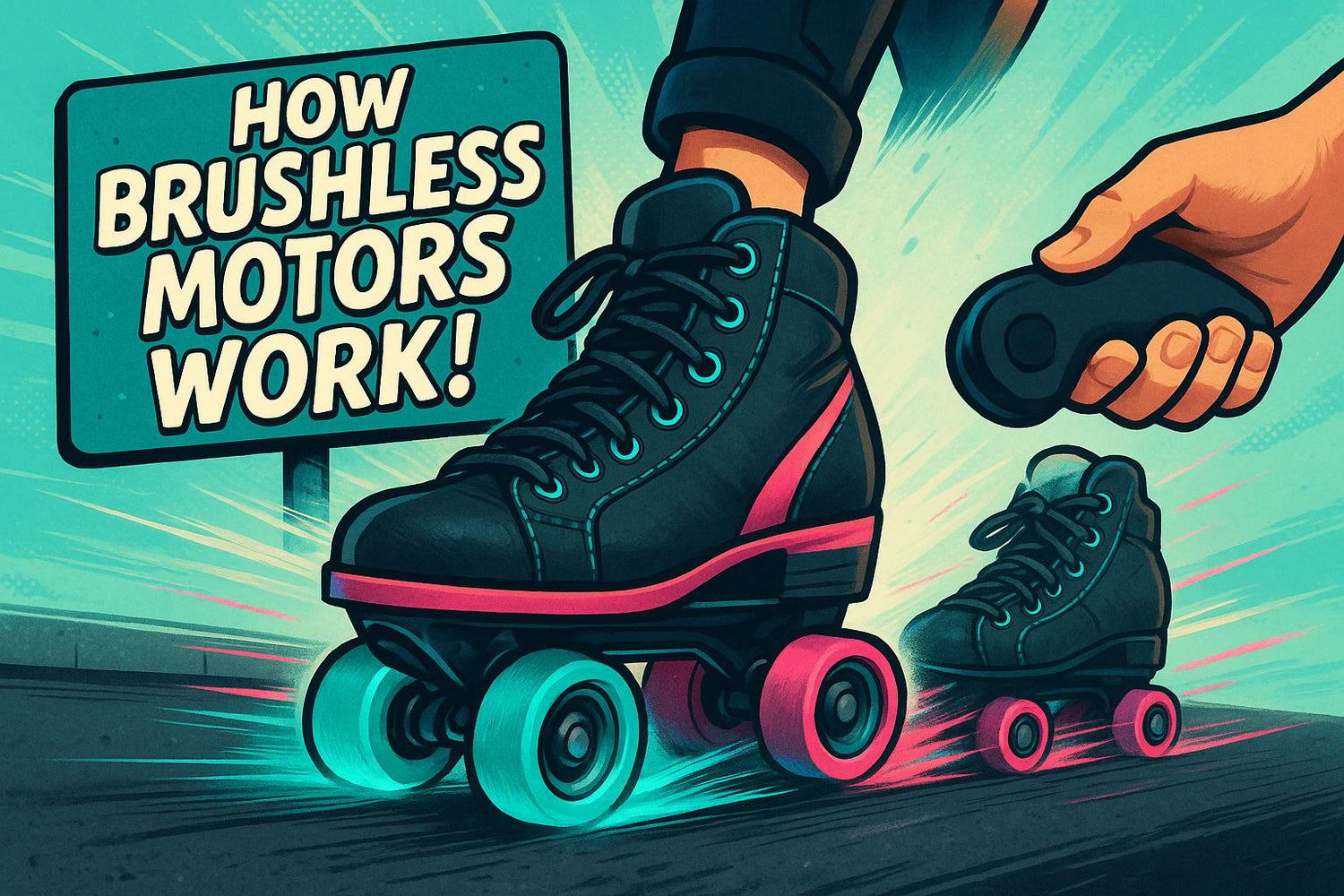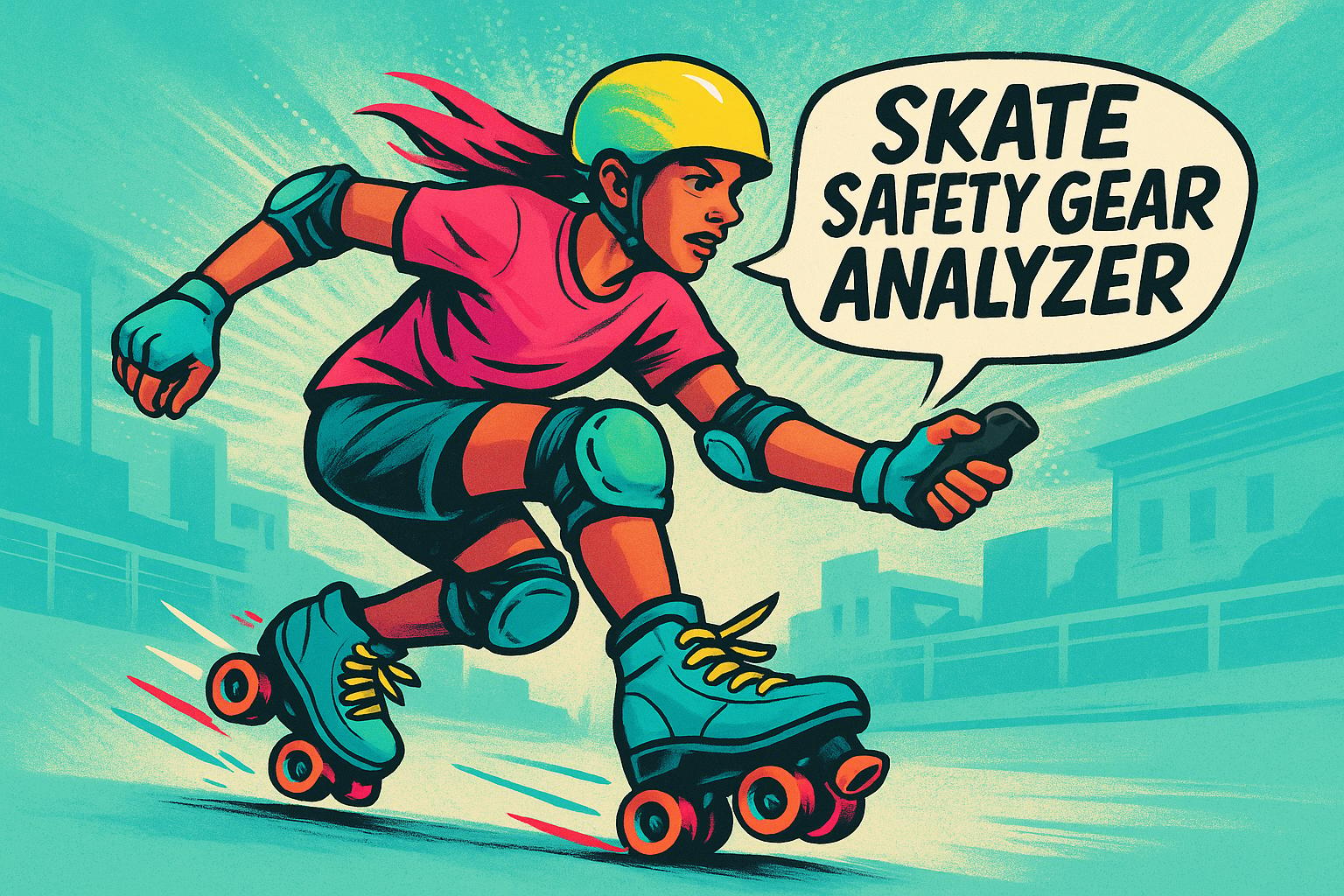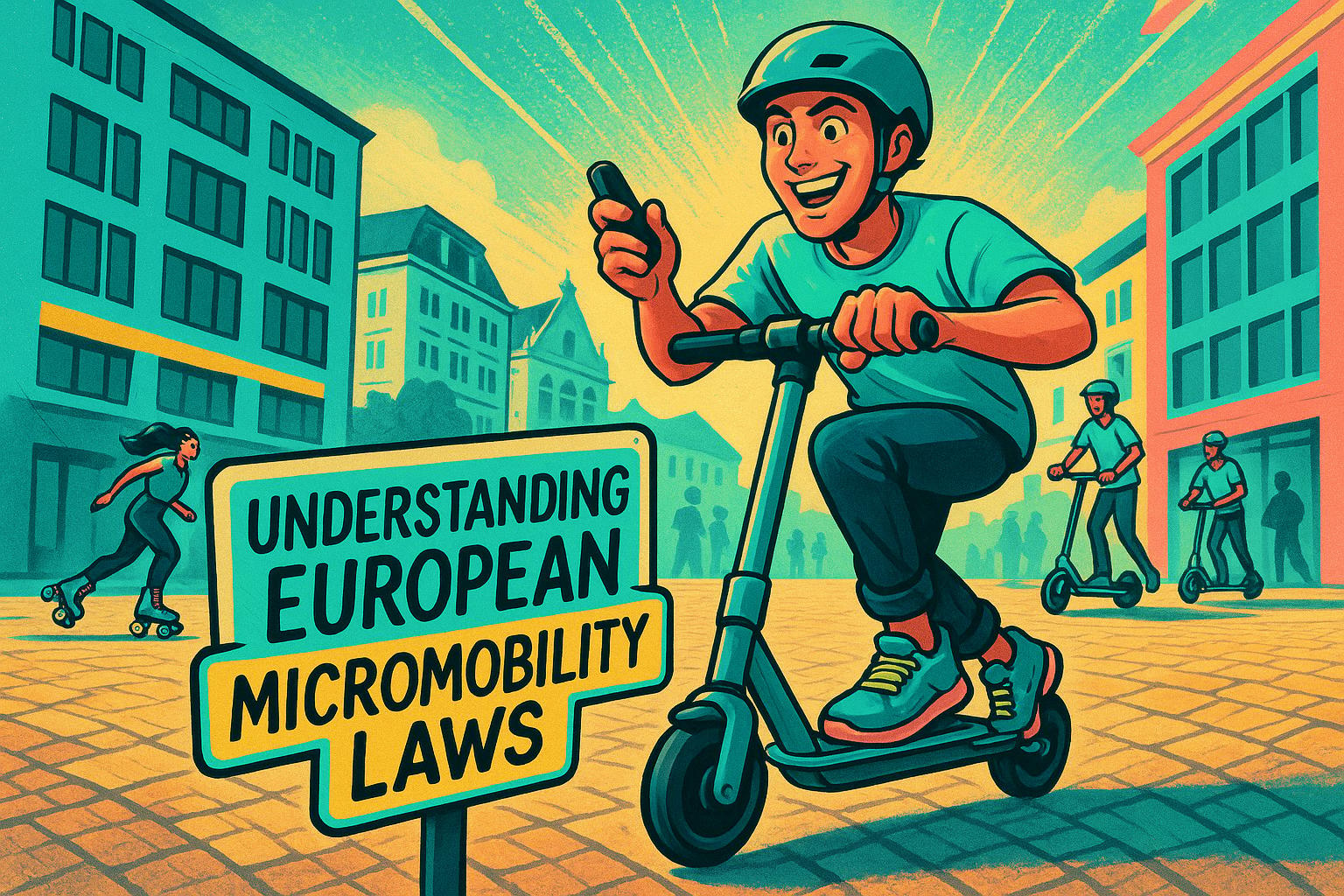Brushless motors power everything from ceiling fans to electric roller skates, offering efficiency, durability, and low maintenance. Unlike traditional motors, they skip physical brushes and rely on electronic controls, which reduces wear and tear, minimizes friction, and extends lifespan. Here's a quick breakdown of how they work:
- Key Components: The stator (stationary part with electromagnetic coils), the rotor (spinning part with permanent magnets), and the electronic speed controller (ESC) that manages the motor's operation.
- How They Work: The ESC controls the stator's electromagnets to create a rotating magnetic field, pulling the rotor's magnets and generating smooth motion.
- Advantages: Quiet operation, longer lifespan, energy efficiency, and precise control for smooth acceleration and braking.
Devices like Wheelfeet electric roller skates use brushless motors for speeds up to 15 mph, a 9-mile range, and features like regenerative braking. These motors are efficient, lightweight, and ideal for urban commuting or personal transportation.
Brushless Motor - How they work BLDC ESC PWM
Main Parts of a Brushless Motor
To get a clear picture of how brushless motors function, it’s essential to break them down into their two main components. Once you understand the role of each, the entire system becomes much easier to grasp.
The Stator and Rotor
The stator is the stationary part of the motor, while the rotor is the spinning component at its core. The stator is equipped with electromagnetic coils - copper wires wound tightly around metal cores. When electricity flows through these coils, they generate magnetic fields that can be electronically controlled, switching on and off as needed.
At the center of the motor lies the rotor, which houses permanent magnets that produce a constant magnetic field. The interaction between the stator’s electromagnetic fields and the rotor’s permanent magnets creates a push-and-pull effect. This magnetic dance is what drives the rotor to spin.
The motor achieves precise control over the rotor’s speed and direction by carefully timing which coils are energized and when. This synchronization of magnetic forces is what keeps the rotor moving smoothly and efficiently.
While the rotor’s motion is powered by these magnetic fields, the real magic lies in the component that orchestrates it all - the controller.
Electronic Speed Controller (ESC)
The Electronic Speed Controller (ESC) acts as the brain of the brushless motor system. Its primary role is to manage the switching of the electromagnetic coils - deciding which ones to activate and when. Unlike brushed motors, which rely on physical brushes for this task, brushless motors depend entirely on the ESC for electronic switching.
The ESC continuously monitors the rotor’s position and ensures the correct coils are energized at just the right moment. This precise control results in the smooth, seamless operation that brushless motors are known for. The ESC also takes charge of speed regulation, allowing for smooth acceleration and deceleration. For example, when you speed up on electric roller skates, the ESC adjusts the switching frequency to deliver a steady increase in speed without any sudden jolts.
One of the standout features of an ESC is its ability to adapt. It can adjust its switching patterns hundreds of times per second, responding instantly to changes in load, speed, or direction. This responsiveness is what makes brushless motors feel so intuitive and easy to control in devices like personal transportation gadgets.
Another key function of the ESC is regenerative braking. When slowing down, the motor can reverse its role and generate electricity, sending it back to the battery. This not only improves energy efficiency but also extends the range of your device. It’s like having a built-in energy recycler that captures power instead of wasting it as heat.
Together, the stator, rotor, and ESC create a system that delivers smooth, efficient, and reliable performance - perfect for devices like Wheelfeet electric roller skates, where precision and responsiveness make all the difference.
How Brushless Motors Work
Now that we've covered the main components, let’s break down how these parts work together to create motion step by step.
The Role of Electromagnets
Picture the electromagnets in the stator as a team of invisible hands, taking turns pushing and pulling the rotor. The ESC (Electronic Speed Controller) energizes three electromagnets placed 120 degrees apart in a precise sequence. This creates a rotating magnetic field that continuously pulls the rotor’s permanent magnets forward.
The rotor never fully aligns with any single electromagnet because the magnetic field keeps moving ahead of it. This constant motion ensures smooth rotation, avoiding the jerky movements often seen in simpler motor designs. To achieve this, the ESC must always know the rotor's exact position to time the magnetic field perfectly. This concept of controlled switching will be explored further in the next section.
Electronic Switching Instead of Brushes
In traditional brushed motors, carbon brushes physically contact metal parts to switch the current flow. While effective, this design generates friction, heat, and sparks - all of which wear down the brushes over time.
Brushless motors sidestep these issues by using electronic switching. Instead of relying on physical contact, the ESC employs electronic switches to control the flow of current. This method offers several advantages: reduced energy loss as heat, cooler and more efficient operation, longer motor life, and quiet performance.
Thanks to this friction-free switching, brushless motors are not only more efficient but also more durable. However, consistent torque generation still depends heavily on accurate rotor positioning.
Torque and Rotor Positioning
While electronic switching smooths out power delivery, precise rotor positioning is critical for generating torque - the twisting force that drives your device forward. This precision is achieved through three Hall sensors, spaced 120 degrees apart. These sensors constantly monitor the rotor’s position and send signals to the ESC, allowing it to time the activation of the electromagnets perfectly.
As the rotor spins, its permanent magnets pass by each Hall sensor, creating unique electrical signals that change based on the rotor’s position. Using this data, the ESC determines which electromagnets to activate and when, ensuring the rotor is always pushed or pulled at the optimal moment. Think of it like timing a push on a swing to achieve the highest arc - it’s all about precision.
This level of control is what enables brushless motors to deliver smooth, consistent torque, making them ideal for high-performance applications like Wheelfeet’s electric roller skates. To maintain this precision, the placement of the Hall sensors must be incredibly accurate. Even minor misalignments can lead to vibrations or reduced efficiency, which is why top-quality brushless motors undergo meticulous calibration during manufacturing.
sbb-itb-bf837b9
Why Brushless Motors Are Efficient and Eco-Friendly
The design of brushless motors not only enhances their precision but also brings clear eco-friendly benefits. By eliminating brushes and commutators, these motors significantly reduce friction and heat loss. This allows them to convert electricity into mechanical power much more efficiently than traditional brushed motors. Greater efficiency means longer battery life and lower energy consumption - an essential feature for devices like electric roller skates.
With an electronic speed controller (ESC) managing the current flow, brushless motors achieve smooth and precise rotor movement while minimizing energy waste. The result? Cooler, quieter, and more efficient operation.
Brushless vs. Brushed Motors Comparison
When comparing brushless and brushed motors, their performance differences become evident:
| Feature | Brushed Motor | Brushless Motor |
|---|---|---|
| Efficiency | Lower (friction and heat loss from brushes) | Higher (no brush friction, less energy wasted as heat) |
| Maintenance Requirements | Frequent brush replacements | Minimal |
| Lifespan | Shorter (brushes and commutator wear out) | Longer (no wearing components like brushes) |
| Noise & Vibration Levels | Higher (caused by brush arcing and friction) | Lower (smooth electronic operation) |
Without brushes or other wearing parts, brushless motors require almost no maintenance while delivering reliable performance over thousands of hours. This durability makes them an excellent choice for personal transportation devices where consistent performance is critical.
Eco-Friendly Benefits
Brushless motors play a significant role in promoting sustainable transportation, thanks to their exceptional energy efficiency and reduced environmental impact. By using less energy and extending battery life, they help lower the overall carbon footprint.
Their cooler operation also reduces energy loss, further improving efficiency. For urban commuters, these advantages mean not only longer-lasting batteries but also a more sustainable and dependable way to get around. These environmental perks enhance both the performance and sustainability of Wheelfeet electric roller skates.
Brushless Motors in Wheelfeet Electric Roller Skates

Wheelfeet electric roller skates rely on brushless motors to deliver smooth acceleration, reliable braking, and a lightweight build. Let’s dive into how these skates combine performance, design, and urban practicality.
Performance and Features
Wheelfeet skates can reach speeds of up to 15 mph, making them suitable for both casual rides and daily commutes. Thanks to an advanced electronic speed controller paired with the brushless motor system, riders can adjust speed settings to match their comfort level or tackle varying terrains with ease.
One standout feature is regenerative braking. When activated via the wireless remote, this system converts kinetic energy into electrical energy, helping recharge the battery while ensuring smooth and controlled braking. This seamless operation is a hallmark of brushless motor technology, which excels in precise electronic switching.
The integration of brushless motors also enables responsive wireless controls, ensuring smooth acceleration and deceleration that feels natural and intuitive.
Portability and Design Benefits
The design of Wheelfeet skates takes full advantage of the efficiency and compactness of brushless motors. These motors offer a high torque-to-weight ratio, delivering ample power while keeping the skates lightweight and easy to handle. This balance is essential for maintaining both performance and portability.
With their compact size, the motors generate impressive power without taking up excessive space, leaving room for other important components like the battery. The result? A sleek, streamlined design that doesn’t compromise on functionality.
The skates offer a range of up to 9 miles per charge, thanks to the energy efficiency of brushless motors. By optimizing energy use, the battery system is designed to be lightweight rather than oversized, making these skates easy to carry and ideal for urban commuting or quick storage when not in use.
Urban Mobility and Quiet Operation
Brushless motors also shine in urban environments, offering a quiet and responsive ride. Unlike brushed motors, which can be noisy due to physical brush contact, brushless motors rely on electronic switching, resulting in minimal sound. This makes Wheelfeet skates perfect for quiet early-morning commutes, office use, or residential areas where noise might be a concern.
The skates’ efficient motors align with eco-conscious urban living by reducing emissions compared to traditional vehicles. Additionally, their precise torque control and steady power output allow them to handle a variety of surfaces, from smooth sidewalks to slight inclines and uneven textures. For city riders, the dual-mode design offers the flexibility to switch between powered and manual skating without unnecessary drag, adding to their convenience and versatility.
Benefits for Everyday Use
Main Takeaways
Brushless motors bring three standout perks that make electric roller skates, like Wheelfeet, a smart option for daily life. First up: low maintenance. These motors don’t have physical brushes that wear out, so there’s no need for regular tune-ups or part replacements.
Next is energy efficiency, which directly translates to longer rides and fewer charging sessions. Thanks to electronic switching, less energy is wasted as heat, meaning more of the battery power goes straight into movement. This efficiency is a key factor behind the skates' impressive range.
Lastly, there are environmental benefits. Beyond being emission-free, brushless motors have a longer lifespan and need fewer replacement parts, which helps cut down on manufacturing waste. Plus, features like regenerative braking capture energy during use, further improving efficiency.
Together, these benefits make urban rides smoother and more convenient.
Impact on Urban Lifestyles
Beyond their technical perks, brushless motors are transforming the way people commute in cities. Their quiet operation means you can glide through residential areas, office spaces, or early morning streets without causing a stir. This near-silent performance makes them a practical choice for a variety of daily activities.
Another key factor is reliability. When you rely on your skates for more than just fun - like getting to work or running errands - you need dependable performance. Brushless motors deliver steady power and precise control, making it easy to handle different terrains, from smooth sidewalks to gentle slopes.
For those looking to reduce their carbon footprint, these skates offer a great alternative to short car rides or crowded public transportation. The combination of efficiency, durability, and performance makes them perfect for quick trips around the city or the "last mile" of your commute. And if the battery runs low? The manual override lets you keep skating without extra resistance.
FAQs
How does an Electronic Speed Controller (ESC) improve the performance of brushless motors in electric roller skates?
An Electronic Speed Controller (ESC) serves as the brain behind brushless motors, ensuring they operate smoothly and efficiently. By carefully adjusting the electrical power sent to the motor, the ESC controls speed, direction, and braking. This results in smoother acceleration, sharper responsiveness, and better energy management.
When it comes to electric roller skates, the ESC plays a key role in enhancing performance. It delivers steady power and precise control, which are vital for both safety and a comfortable ride. Plus, by boosting motor efficiency, it helps conserve battery life, making it an essential component for personal transportation devices.
What makes brushless motors more eco-friendly than traditional brushed motors?
Brushless motors stand out as a more environmentally conscious option because they operate with higher efficiency, requiring less energy to accomplish the same tasks. This translates to reduced electricity consumption, which can contribute to lowering greenhouse gas emissions linked to power generation.
Another key advantage is their design. Unlike traditional brushed motors, brushless motors don’t rely on carbon brushes, which wear down over time and generate waste. This not only cuts down on pollution but also reduces the need for frequent maintenance and replacement materials. With their extended lifespan and minimal upkeep requirements, brushless motors offer a cleaner, more sustainable solution for powering devices like electric roller skates.
How does regenerative braking improve energy efficiency and extend the range of electric roller skates?
Regenerative braking boosts energy efficiency by taking the kinetic energy produced when you slow down and turning it into electrical energy. This converted energy is stored in the battery, cutting down on waste and giving your ride a little extra mileage.
For electric roller skates, this translates to a longer range, as less energy is wasted during braking. Plus, it eases the strain on traditional braking systems, which can lead to lower maintenance costs and a smoother, more reliable ride. It's a smart upgrade for both performance and extending battery life!




Leave a comment
All comments are moderated before being published.
This site is protected by hCaptcha and the hCaptcha Privacy Policy and Terms of Service apply.